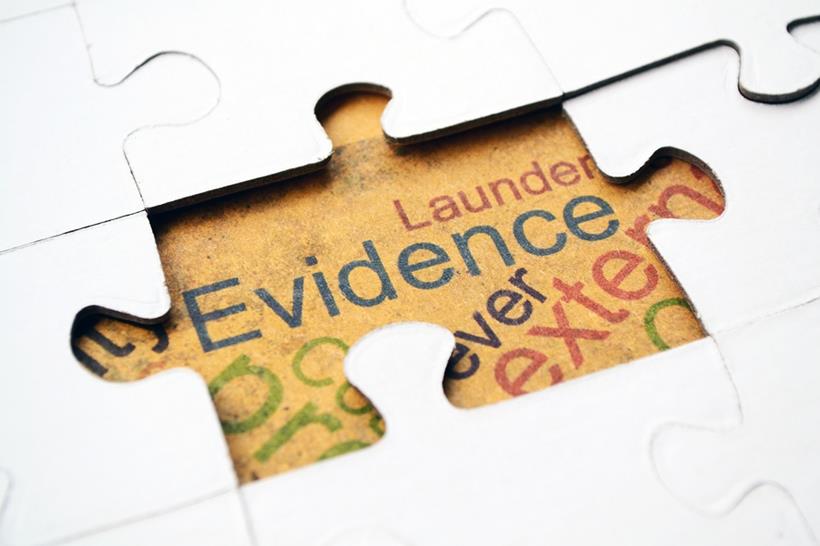
This article appeared in the August, 2011 issue of IQ – the Records and Information Management Professionals Australasia (RIM) Quarterly magazine. To download, click here: Successful EDRMS: From Little Things Big Things Grow
EDRMS (Electronic Document and Records Management System) projects are reported to take on average four or more years to achieve adoption rates of above 75%. Many stories also abound about totally failed projects or scary stories about seemingly successful projects where the effective uptake at the organisational level was high but adoption at the personal level was poor. Poor adoption at the personal level has led to embarrassment, reputation damage, multi-million dollar financial loss and fatalities.
So what makes for a successful EDRMS project implementation?
In the first of a series of interviews with effective EDRMS project and information managers, Michelle Linton from Linked Training and Kevin Dwyer from Change Factory, put Christine Macqueen under the spotlight. Christine has recently completed a five year contract as Corporate Records & ERDM Project Manager of the NSW agency, Ageing, Disability and Home Care (ADHC). Christine ran a one person EDRMS department servicing thirteen and a half thousand people. At first, and second glance, it would appear an impossible position. From such a small base how could it be possible to successfully grow recordkeeping with the aim of engaging over seven thousand end users? We sought to glean the key success factors of her successful record keeping initiatives (with apologies to Paul Kelly for the title).
Creating the burning platform
Since 2006 Ageing, Disability and Home Care now an Agency of the NSW Department of Family and Community Services, has championed the government’s agendas for improved disability service delivery in the Stronger Together program. The program is monitored through the agency’s information management systems. Christine sees good records management as being critical to delivering on the promise through the provision of a solid and contestable evidence base.
“To comply with legislation, such as the State and National Disability Standards and the State Records Act, is important. The systems of government reporting and audits by external regulators also means that we must have a strong evidence base”
“However, the rationale for good recordkeeping processes and systems lies beyond compliance. If we are going to live up to our service delivery goals and obligations, we must sustain a commitment to a solid evidence base which means ongoing improvements to the collection and use of our information resources.”
As Christine succinctly describes, “The burning platform for our recordkeeping business cases is inevitably couched in compliance language that suitably translates to improvements in frontline service delivery outcomes.”
Creating the business case
Christine passionately believes, “Records management is an enabler of accountable frontline service delivery.” Working within an agency with a focus on service delivery means that operating budgets are focused where service delivery improvement is needed most. Christine therefore oversaw a records management strategy that was implemented in an opportunistic manner as funds for system improvements become available.
She says, “We have to be ready with our business processes understood, and re-engineered if necessary, and our business cases complete and marketed internally, to take immediate action when and where funds become available for the required training to facilitate uptake.”
To understand and re-engineer the business processes, Christine assembles a representative group of her internal clients and goes through a method of intelligent facilitation to arrive at an agreed understanding of the problem and the options for a solution.
“I have a few rules for engagement with the business on processes:
- Challenge why the existing process is in place
- Don’t assume that the same practices are being used for the same process across the agency given its size
- Ask how it can be changed to help them get time back and improve outcomes
- Never take away their ability to make the decisions”
As part of the consultation each business group is empowered to improve and then test their own business process and its efficiency. TRIM is the facilitation tool to support the change, not the driver of the change.
Getting buy-in
Christine’s experience with change is that some people may want to ask “Why do we have to do this?”
“Sometimes we have to have a reality check. In our case improved service outcomes is part of our government mandate and program goals. However, it is wise if you are going to be directive and maybe even ‘thump the table’ based on compliance requirements that you build bridges quickly by giving some ground on things that are important aspects of the regular work practices of end users.”
“As records managers we can’t be the owners of a process, only the business can do that. We can’t take people to a place they do not want to go, we have to encourage and provide the compliance and process knowledge that enhances their behaviour and practices.”
“We have to build solidarity between the business and our role as records managers so that when budgets become available to improve processes we are ready to go and the business is too. Solidarity is built by gradually increasing mutual understanding.”
Christine acknowledges that sometimes a records manager may spot a weakness in a process that the business cannot see and that the process of getting a business case across the line is not a simple linear one. “In those situations I know what I want to achieve. I identify the burning platform and wait for the opportunity to put it forward. I may have several business cases in my drawer at any one time waiting for the opportunity.”
Christine takes a long term strategic approach to improved records management and TRIM use. “If need be, business cases may be deconstructed to get chunks committed too. Over time, provided you have a clear view of the outcomes you want and are persistent, large projects can be implemented in chunks.”
“We are finding that taking this approach the energy level around recordkeeping is growing not diminishing. Regions control their own Learning and Development spending and TRIM training is just one of many programs to choose from. Having put the training programs in place delivery of TRIM training has increased by 200% year on year for the past two years.”
Overcoming barriers to implementation
Barriers to implementation take all forms, however a key impediment Christine observes is the hierarchical, siloed environment of many organisations.
“These organisations are risk averse. There is little systemic thinking through the organisation and hence an incapacity to see interrelationships. When problems occur, these organisations rarely get to root causes. The solutions therefore rarely solve the problem.”
The implication for the records manager of such an environment is of a broader deeper role. “As the records manager or project manager you have to be a leader and a manager at the same time, mapping out all the consequences for people as part of building internal commitment. “
The requirement to be a leader and not just a manager has further implications for a record manager in terms of their knowledge to be an effective implementer. Christine says, “That opens the question, ‘If you are the project director how do you know if the team’s solution is valid if you do not know the content? You then need to be across the content too and not just the project management principles.”
How to survive as a ‘One man band’
Many records management departments are small with a few dedicated staff serving thousands of people in the business. Christine shared some insights on how she survives as a department of one.
“Understand that you don’t own it work in partnership with your stakeholders and hire good help!”
She also believes in the need to give up ownership and be prepared to work with the business on continuous improvement. “Although the hardest part is not having control we have to give the business room to make mistakes to give them skills to survive and grow in the recordkeeping world. However, we may have to be direct with those who do not have the same skills or knowledge of the compliance and process requirements.” A pathway for induction level training in the recordkeeping requirements of the agency has been put in place for all new staff, and a development pathway is actively promoted.
“Content knowledge is critical to success. Small teams must find a way of getting across the business content. As the IT people talk more about virtual storage and the Cloud and organisations rely more and more on corporate decision systems the role of records managers becomes even more important. The fundamental role of records people in the management of classification systems for the creation of all categories of records and disposal schedules for their long term management affects the whole environment of information management” In Christine’s experience this can be achieved by developing a fundamental understanding of the content, working with the subject matter experts for detail, the technical experts for structure and architecture and developing the facilitation skills to draw out the required information from each business group to manage the overall lifecycles of the records.
Records managers take many forms. Often they are seen as subject matter experts called upon to create solutions when issues arising from poor recordkeeping practices endanger the reputation, financial position or safety of people in the organisation. In other organisations they are seen principally as the archivists of the organisation’s records having little influence on organisational processes that create the records. Christine demonstrates in stark clarity that a proactive, facilitative records manager that seeks to understand the business, work with and educate the business can make recordkeeping a welcome and valued part of business as usual.
© 2011 Change Factory and Linked Training






